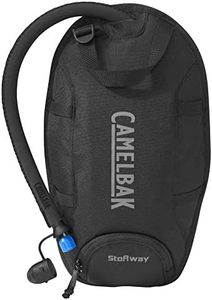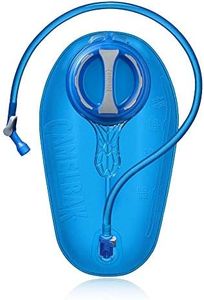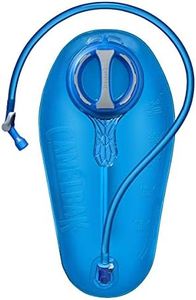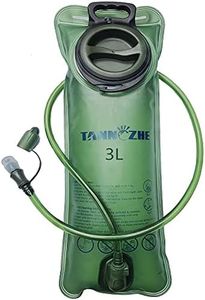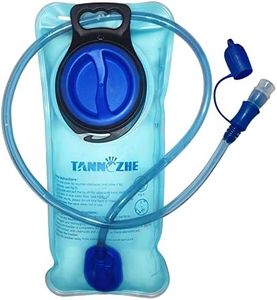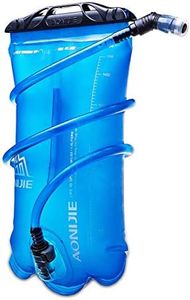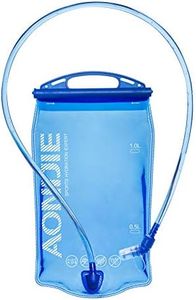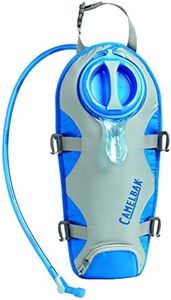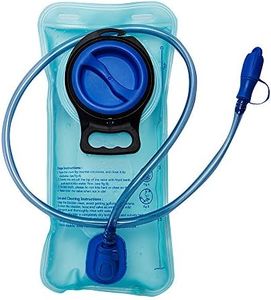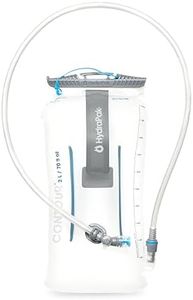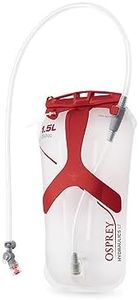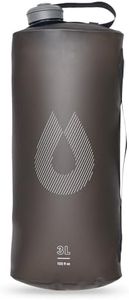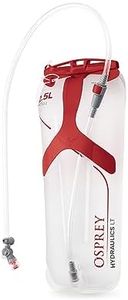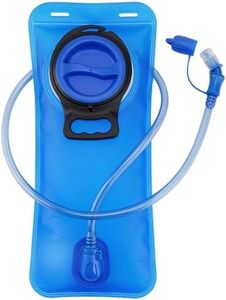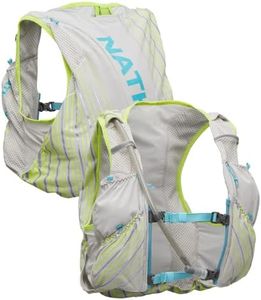We Use CookiesWe use cookies to enhance the security, performance,
functionality and for analytical and promotional activities. By continuing to browse this site you
are agreeing to our privacy policy
10 Best Hydration Bladders
From leading brands and best sellers available on the web.Buying Guide for the Best Hydration Bladders
Choosing the right hydration bladder can make your outdoor adventures much more enjoyable and convenient. Whether you’re hiking, biking, or exploring, hydration bladders help you carry water comfortably and drink hands-free. The ideal choice is one that fits your activity needs, is easy to clean, and holds enough water for your outing. As you shop, pay close attention to the key specs—they will determine how practical and satisfying your purchase will be.CapacityCapacity indicates how much water the bladder can hold, usually measured in liters. This is important because it decides how long you can stay hydrated without needing to refill. Hydration bladders typically fall into three main segments: 1 to 1.5 liters (great for short runs or light hikes), 2 liters (fits most day adventures), and 3 liters or more (ideal for long treks or hot climates). To pick the right size, think about the length and intensity of your activities as well as the access to water sources along your route—short outings need smaller sizes, while longer or hotter conditions require larger ones.
Bladder Shape and SizeThe shape and size determine how the bladder sits inside your backpack or hydration pack. A slim, long bladder fits most traditional hydration sleeves, while a wider, shorter shape may suit specific backpacks better. This matters because a good fit prevents sloshing and discomfort. Check your pack—some offer a designated compartment or sleeve—then choose a bladder shape that matches for a snug, comfortable fit.
MaterialHydration bladders are typically made from materials like TPU (thermoplastic polyurethane), polyethylene, or sometimes silicone. This spec affects durability, taste, and weight. Higher-quality materials are less likely to leave a plastic taste and resist punctures better. If you’re going out in rough terrain or want a fresh taste, pick premium or taste-free materials; if it’s just occasional light use, standard options work well.
Bite Valve DesignThe bite valve is the part you drink from, and its design makes drinking on the move easy or sometimes frustrating. Some valves have a simple on/off switch or a lock to prevent leaks, while others are always open and rely on biting for flow. Pick a design that best fits your intended activity: for running or cycling, a quick-flow, easy-access valve is handy; for hiking, a locking option may help avoid spills inside your pack.
Ease of CleaningSome bladders have wide openings, removable hoses, or quick-disconnect valves, all making cleaning easier and preventing mold or odor buildup. If you plan to use the bladder often, especially with anything other than water, choose a model with a wide-mouth opening and disassemblable parts to make sure thorough cleaning is simple and quick. If you only use it occasionally, ease of cleaning might be less critical.
Durability and Leak ResistanceDurability determines how well the bladder withstands pressure, drops, or rough use, while leak resistance ensures your gear stays dry. Some bladders reinforce seams and use thicker materials for rugged environments; others prioritize low weight for racing or minimal use. Match durability to your activities: if you adventure off-trail or travel far from help, prioritize strength and leak-proof promises; for light, local treks, standard construction usually suffices.
Tube Length and Routing OptionsThe hose or tube length affects how easily you can reach it for sips, and routing features like clips or magnets help position the hose just where you want it. A tube that’s too short or long can be awkward to use. When deciding, think about your torso size and how you’ll wear your pack—try to choose a bladder that offers tube length adjustability or helpful routing accessories for quick, convenient access.
